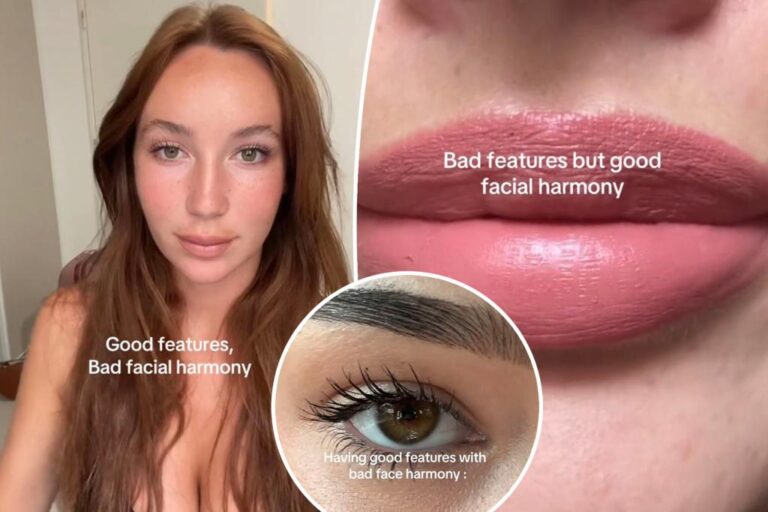Beauty-obsessed Gen Zers are loudly talking about “Facial Harmony,” the latest trend taking TikTok’s “For You” page by storm.
Gen Z creators post detailed photos of their noses, eyes, jawlines, cheekbones, and lips, and analyze whether their facial features, when put together, subjectively look like a “good” or “bad” match.
They accentuate so-called “bad” features like a round jawline, a Roman nose, thin lips, etc., which actually create “good” facial proportions. Conversely, some people may have “good” features like a button nose, chiseled cheekbones, full lips, etc., which create a seemingly “bad” facial proportions.
While measuring beauty seems arbitrary, board-certified dermatologist Dr Geeta Yadav explained that there’s a science to the madness.
“There’s something called the ‘golden ratio,’ a measurement known as phi that is considered aesthetically ideal and can be found in nature, architecture, art and faces,” the Toronto-based doctor told the fashion magazine.
This ratio (1:1.618) describes the size and distance of facial features. For example, your bottom lip should be 1.6 times larger in volume than your top lip to have a truly “harmonious” face, at least scientifically speaking, she added.
According to this equation, some A-list stars, like Robert Pattinson and Rege-Jean Page, could even be said to achieve the gold standard of beauty.
But the golden ratio doesn’t necessarily equate to beauty — a fact that’s hard to stomach for TikTok’s highly critical Zoomers, who are flocking to get Botox, fillers and other appearance-correcting procedures, the data reveals.
“The rules of facial harmony are taught implicitly or explicitly, but they can remain haunting in the back of people’s minds and cause negative attachments,” Dr Jennifer Mills, clinical psychologist and professor at the University of York, told Fashion Magazine.
“We worry when it takes mental energy away from other aspects of our lives that bring value to them, like friends, family, work, and school.”
Needless to say, not everyone has the money or time to tinker with their look to keep up with trends, she pointed out.
Plastic surgeons Dr. Michael Brandt and Dr. Ron Somogyi of FORM Face+Body told the fashion magazine that a harmonious face can’t really be measured by a uniform.
“This is a kind of talent that you can see when you see it,” the researchers say, but they warn of the dangers of following fads seen online, such as cheek fat removal.
“If we follow the trend, we will likely have to go through many steps in the future to redo or reverse some of the changes that have been made,” they added.
Trying to emulate certain beauty trends popularized by influencers, celebrities and other online figures can result in what Yadav calls “Instagram look” – full lips, doll-like noses and filler-plumped cheeks.
Selfie culture and the proliferation of social media filters appear to be driving young people to plastic surgery, and this summer has seen a buzz around excessive plastic surgery, with the “Love Island effect” named after the hit reality TV show that features contestants who have had cosmetic surgery done to make them look almost identical.
“When it comes to the ‘Instagram face’, once you get past a certain point you go beyond the golden ratio and into the uncanny valley, creating something so perfect that it becomes eerily inhuman,” Yadav explained.

